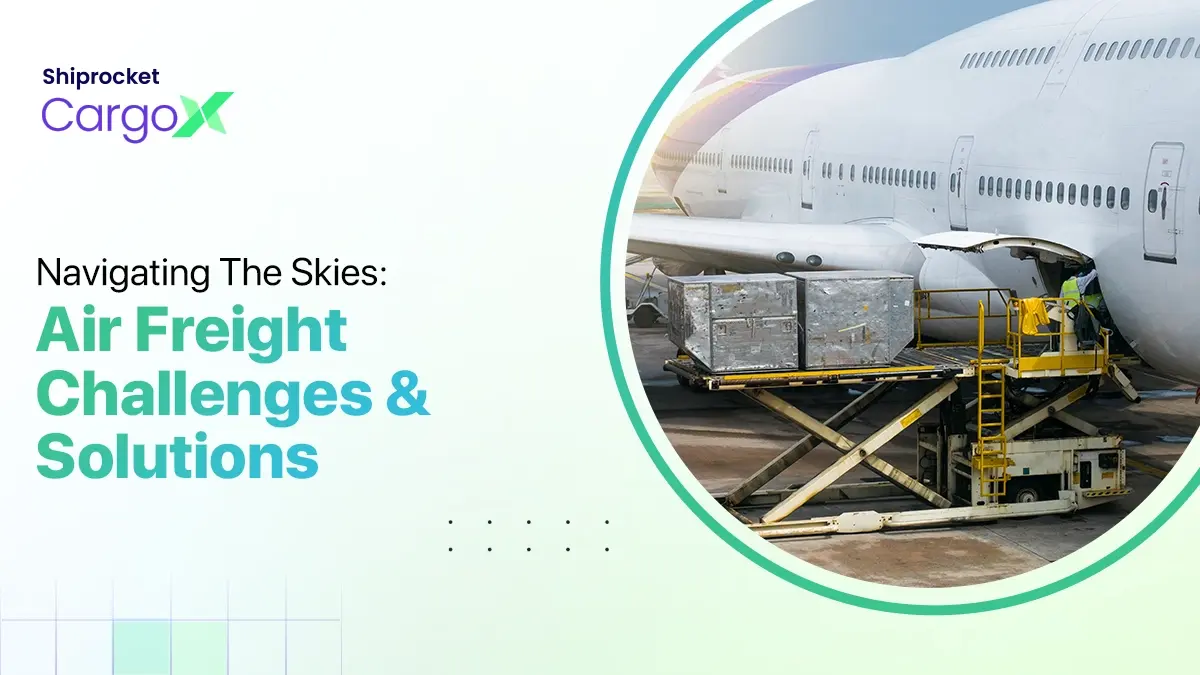What Is Cross-Docking? 4 Reasons Why You Must Opt For It
In a competitive market scenario, adopting ways that increase efficiency and augment customer satisfaction is always advisable. Cross-docking is a logistics strategy that reduces shipping delays and restricts warehouses’ use.
The inventory associated with warehousing is almost eliminated with cross-docking. In the supply chain mechanisms, warehousing plays a significant role which adds to the cost component and diminishes competitive advantage.
Cross docking has become extremely popular and is an impactful procedure in the supply chain industry. In this blog, we will discuss and reiterate the critical techniques, cross-docking examples, and advantages it possesses in the logistics industry.
With increasingly eCommerce businesses striving to exist in the competitive market, the logistics overflow is also increasing by the passing day. The primary focus of the supply chain is to remain efficient and agile. However, technological advancement has increased inventory efficiency, but it still lags in many ways.
More and more logistics companies are trying to follow the cross-docking method to reduce the inventory cost as it costs less capital. This majorly means the product will reach the customer directly from the seller’s hub without getting stored in any warehouse. Cross-docking also offers various ways to optimise transportation, a major cost-effective solution for any business.
Business Without Cross-Docking System
Without a cross-docking system, the products are stored in warehouses and are not passed via distribution centres. Take a look at the picture given below.
What Makes It Exceptional?
It reduces the warehouse cost and increases the delivery workflow and distribution process efficiency.
This process can be divided into two types:
- Pre-distribution Cross-docking
- Post Distribution Cross-docking
What Is Pre-Distribution Cross-Docking?
The process of pre-distribution cross-docking includes unloading, arranging, and repackaging the products according to the pre-decided distribution directions. The customers are listed at the end when products leave the hub for delivering the products.
What Is Post-Distribution Cross-Docking?
In post-distribution cross-docking, arranging the products is kept on hold until names are assigned to the products. This also sheds light on the fact that this process takes longer, and so the products are kept in the distribution center for a longer period of time.
The process helps the sellers make smarter and informed decisions regarding shipping, inventory, sales forecast and trends.
What Is Cross-Docking?
This is a logistics process wherein products from a manufacturing unit or supplier reach the customer directly with minimal or marginal storage time. It takes place in a distribution docking station or terminal that has minimal space for storage.
Products are received at one end of this cross-dock called the inbound dock and transferred to the outbound dock. These materials are screened and sorted according to their destinations and carried to the outbound dock.
Why Is Cross-Docking Used?
Cross-docking is largely used for the products that are in high demand all year round and are shipped in large volumes. The fast-moving goods are highly benefited by cross-docking, as they need comparatively less storage time.
Cross-docking is known for fueling the efficiency of warehouse operations. Cross-docking is not for all business models. However, it can prove to be highly transformative for some.
Types Of Cross-Docking
Manufacturing
This process involves receiving products required by a manufacturing unit. Products are, and the sub-assemblies are prepared for delivery.
Distributor
In this type, items from different vendors are consolidated together and then delivered to the customers. A perfect example is the supply of automobile parts to an automobile parts dealer.
Retail
In retail cross-docking, materials are sourced from different vendors, and the collected items are delivered to retail outlets. Here the procurement is once again of two categories. The first category of goods is those that are needed daily, like groceries, fruits, vegetables, and other fast-moving products. The second category of goods is those that are required once a year; for example, a Christmas tree. This category is bought once a year and is usually not stocked.
Transportation
In this class of cross-docking, less-than-truckload shipments are combined and delivered to customers. Small packaging industries use this method.
Opportunistic
These are specific customer orders where goods are received and shipped immediately without having to store the materials. The use of storage is wholly ruled out.
Why Opt For Cross-Docking?
Cross-docking as a supply chain process is not a regular method of goods shipment. Packaged products that are required to be delivered immediately are the most popular items of this procedure of logistics. Some of the reasons favoring this process are:
Consolidation
When several smaller items need to be consolidated before delivery to the end user, cross-docking is really helpful. The cost of transportation is significantly reduced.
Hub And Spoke
Provision of a centralized site for gathering materials and then sorting similar items together before delivery to multiple destinations. Distribution is fast and cost-optimized.
Deconsolidation
Large product loads are broken down into smaller units for easier delivery to customers.
Reduction In Cost
A lesser need for warehouse space for storage reduces operational cost, which ultimately gives a competitive advantage.
No Need For Warehouse
In most cases, a traditional warehouse is completely ruled out by a cross-dock facility. Not only is such a facility easier to construct, but it also provides savings concerning both fixed and variable assets.
Reduction In Parcel Delivery Time
With cross-docking, the products are screened more rapidly and efficiently. Usually, with the help of automation, the entire process is streamlined, which contributes to faster dispatch and delivery of parcels to the customer’s doorstep.
Less Inventory Handling Risks
A lot of risks are involved when one has to handle every single inventory that comes in and goes out of a warehouse. With cross-docking, these are significantly reduced.
Products Suitable For Cross-Docking
You can cross-dock various kinds of products. However, some items are best suited for cross-docking. These are:
- High-quality items that do not require inspections during goods receipt
- Items that are perishable
- Staples and groceries with constant demand
- Already packaged products from another production plant
- Promotional items that are just being launched
Conclusion
Cross-docking provides a transport optimised solution that enables an effective cost-saving solution for any business. Cross-docking is a highly effective way of reducing dependence on storerooms and warehouses. Logistics has become faster with the introduction of this procedure. To know more about effective logistics strategies, follow Shiprocket.







Nice article on cross-docking.